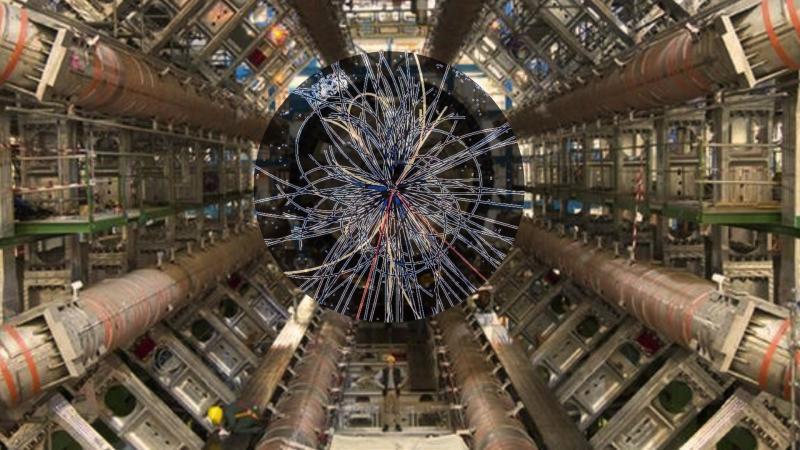
CERN Scientists Shedding Light on Antimatter & the Universe’s Origins
The mysteries of antimatter, a phenomenon that has fascinated scientists for decades, are slowly unraveling at the Large Hadron Collider (LHC) at CERN. Recent findings by the ALICE collaboration have confirmed the first evidence of antihyperhelium-4, a significant breakthrough that offers new insights into the fundamental forces of nature. This discovery not only enhances our understanding of matter-antimatter balance but also provides valuable information about the universe’s early moments.
Antimatter is a type of matter that exhibits opposite charges and spin properties compared to regular matter. When antimatter comes into contact with regular matter, it annihilates, releasing a vast amount of energy in the process. This phenomenon has puzzled scientists for centuries, and its study has the potential to revolutionize our understanding of the universe.
The Large Hadron Collider, a powerful particle accelerator, is the ideal tool for studying antimatter. By colliding particles at incredibly high energies, scientists can create conditions that mimic those present in the early universe. The ALICE collaboration, one of the largest experiments at the LHC, has been focused on studying the properties of heavy-ion collisions. These collisions involve the interaction of ions with atomic numbers greater than or equal to 8, such as lead or gold.
In a recent breakthrough, the ALICE collaboration confirmed the production of antihyperhelium-4, a type of antimatter that consists of four antiprotons. This achievement is significant because it marks the first time that antihyperhelium-4 has been observed in heavy-ion collisions. The discovery was made possible by the LHC’s ability to collide particles at energies of up to 13 trillion electronvolts (TeV), which is roughly 100 times higher than the energy reached by the previous most powerful particle accelerator, the Tevatron.
The production of antihyperhelium-4 is a complex process that involves the interaction of multiple particles and forces. It requires the creation of a quark-gluon plasma, a state of matter that is thought to have existed in the early universe. The quark-gluon plasma is a dense, hot soup of subatomic particles that is capable of producing antimatter.
The ALICE collaboration’s discovery of antihyperhelium-4 provides new insights into the fundamental forces of nature, which govern the behavior of particles and the structure of matter. The study of antimatter is crucial for understanding the universe’s origins and the balance between matter and antimatter.
In the early universe, matter and antimatter are thought to have been created in equal amounts. However, for reasons that are still unknown, matter eventually dominated the universe, leading to the formation of stars, galaxies, and eventually, life as we know it. The study of antimatter can help scientists understand why this imbalance occurred and what the consequences of a matter-antimatter imbalance would have been.
The discovery of antihyperhelium-4 also has implications for the search for dark matter and dark energy, two mysterious components that make up approximately 95% of the universe’s mass-energy budget. Dark matter is thought to be composed of particles that interact with normal matter only through gravity, while dark energy is a mysterious force that is driving the acceleration of the universe’s expansion.
The study of antimatter and the properties of heavy-ion collisions can provide valuable insights into the nature of dark matter and dark energy. For example, the ALICE collaboration’s discovery of antihyperhelium-4 could be used to study the behavior of particles in high-energy collisions, which may help scientists identify the properties of dark matter particles.
In conclusion, the recent discovery of antihyperhelium-4 by the ALICE collaboration at the Large Hadron Collider is a significant breakthrough in the study of antimatter. This achievement not only enhances our understanding of the fundamental forces of nature but also provides valuable insights into the universe’s early moments. The study of antimatter is crucial for understanding the origins of the universe and the balance between matter and antimatter.
As scientists continue to unravel the mysteries of antimatter, they are one step closer to understanding the fundamental forces of nature and the universe’s origins. The discovery of antihyperhelium-4 is a testament to the power of human curiosity and the importance of continued investment in scientific research.
News Source: https://researchmatters.in/news/exotic-antimatter-spotted-heavy-ion-collisions-lhc






